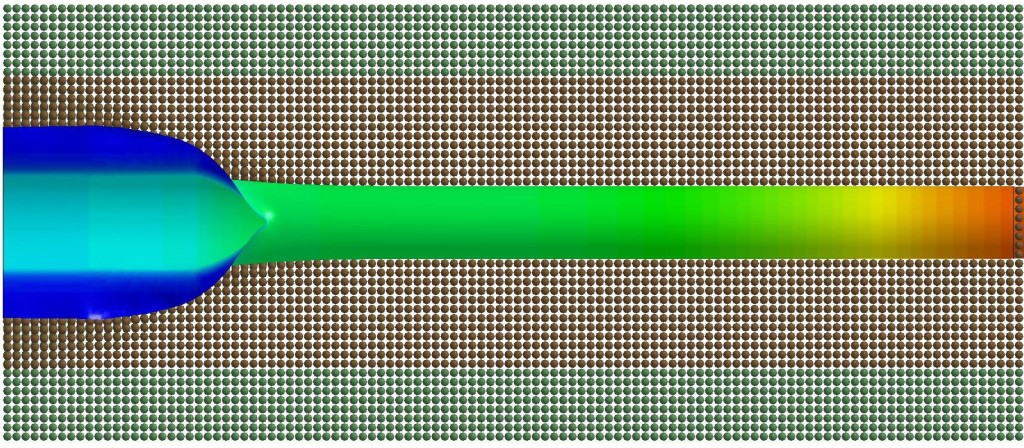Bloggers: Svend Tollak Munkejord, Håkon Ottar Nordhagen, Morten Hammer, Stéphane Dumoulin and Eskil Aursand
In the unlikely event of a rupture in a CO2-transport pipeline, the CO2 will exert more forces on the pipe than what would have been the case for natural gas. This is due to the thermodynamic properties of CO2 and implies that the prevention of long running fractures in CO2 pipelines is more challenging than for natural-gas pipelines. In order to construct CO2 Capture and Storage (CCS) systems that are as safe and as economical as possible, it is important to be aware of and to understand this fact. The study having led to this insight is about to be published in Engineering Structures.
(The article may also be read in the form of a preprint.)
First validation against CO2 experiments
The work has spanned several years and has involved the coupling of models describing thermodynamics, fluid flow and structural dynamics with fracture propagation. In 2012, SINTEF performed (in the CO2PIPETRANS project) two of the first crack-arrest experiments with dense phase CO2 in the world. Results from these experiments served as validation of the coupled fluid–structure model. Our aim is that the model may form the basis for developing engineering methods that safely be used to dimension and operate CO2-transport pipelines and avoid long running-ductile fractures.
Our previous blog gives some more background for the work, which has been conducted in the BIGCCS Centre for environment-friendly energy research. The work has been funded by the Research Council of Norway, and the industrial partners Engie, Gassco, Shell, Statoil and TOTAL.
Video: Simulation of a running-ductile fracture in a CO2 pipeline.

Related blogs
- CO2 transport – safety and efficiency requires quantification
- Gas or liquid: new CO2 mixture property knowledge needed for efficient and robust CCS
- Flow of CO2 in pipes
- Why models are important for safe and efficient CO2 transport

Pingback: Safe CO2 transport pipes is part of the climate solution - #SINTEFblog